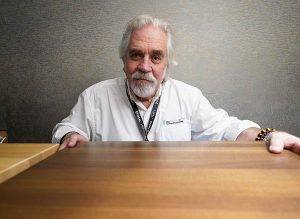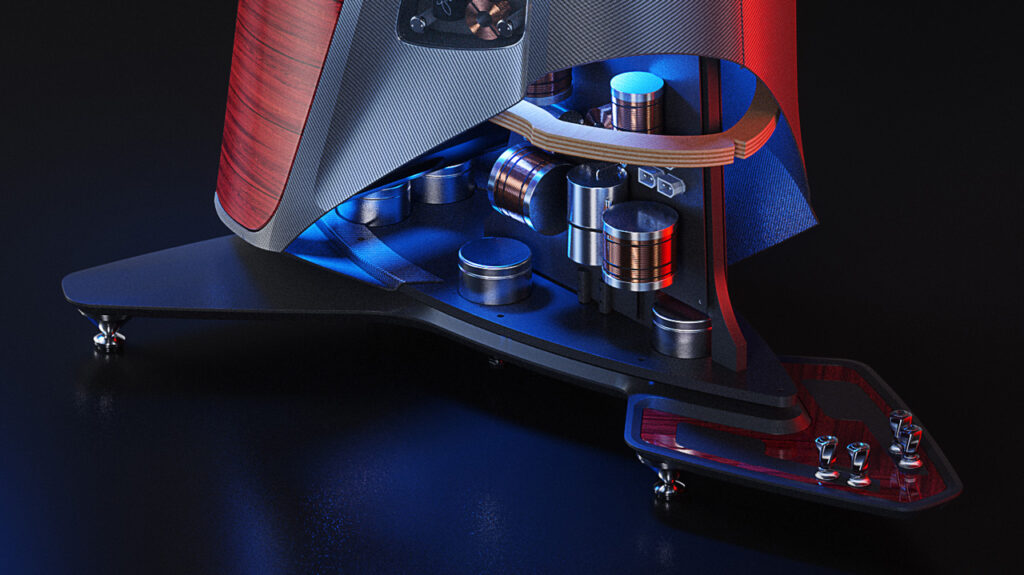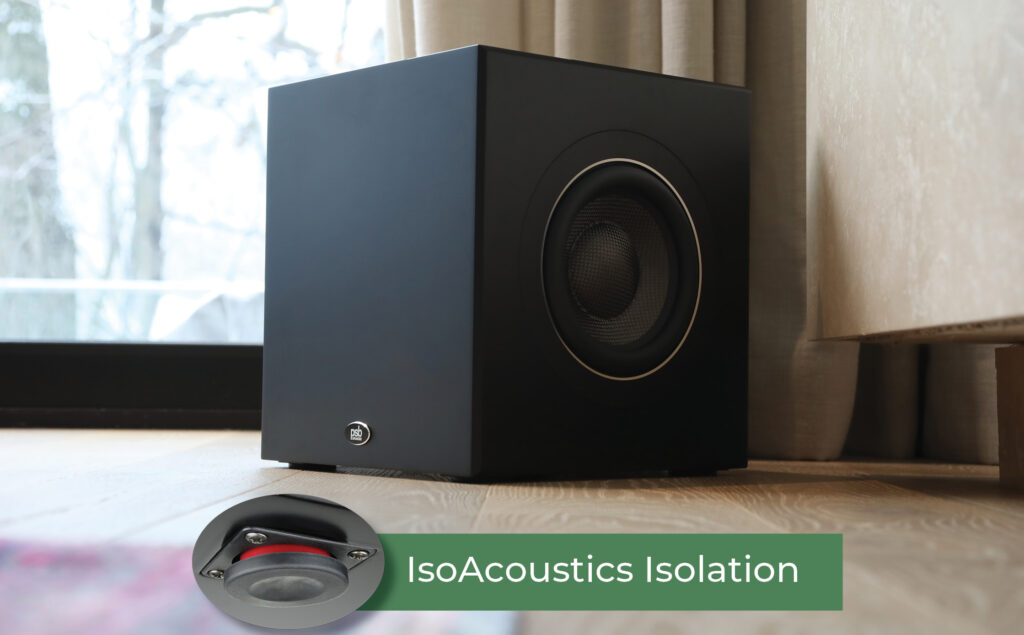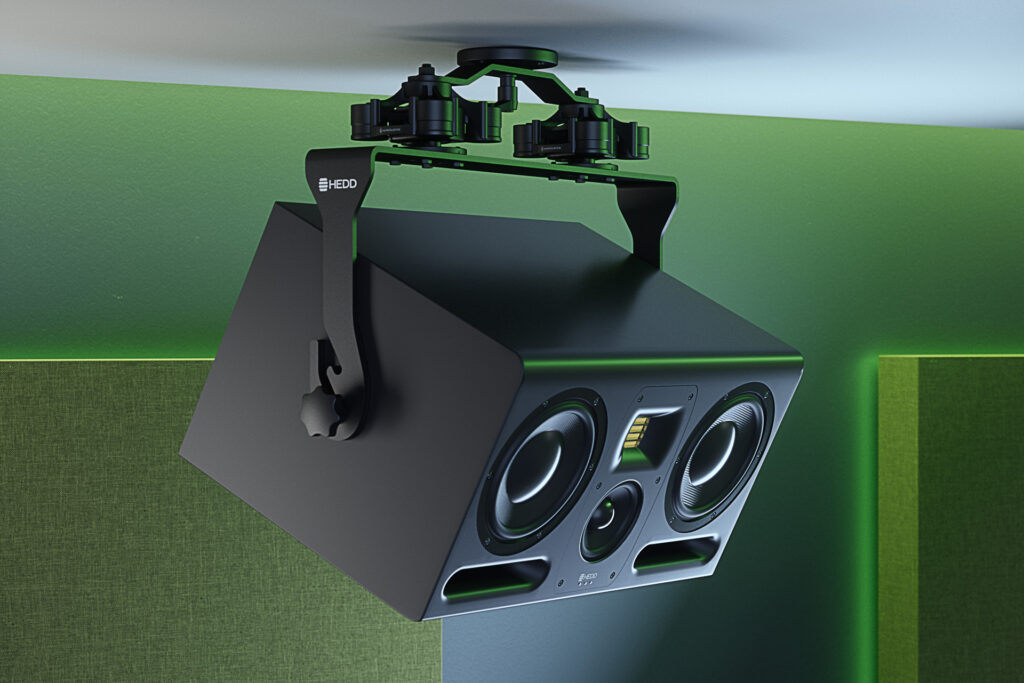HiFi Pig Magazine recently interviewed the founder and president of IsoAcoustics. In this informative sit-down, Dave outlines the history of IsoAcoustics including its inception, development and future steps. Furthermore, Dave discusses the patented technology behind the products.
Here are some highlights of the interview:
HP: What’s the history of IsoAcoustics? Who were mthe key people involved and what were their backgrounds?
DM: I worked at the Canadian Broadcasting Corporation in Toronto for 20 years, and a good deal of that time working
on the design and construction of facilities for radio and television. I was on the design team for the construction of the Broadcasting Centre for 4 years, and when it was completed, it was the world’s largest multimedia centre at 1.72 million square ft (160,000 m2).
At one point in the late ’80s, we were renovating a radio drama studio and installing PSB speakers in the live studio space. I had the opportunity to meet Paul Barton, the founder of PSB, and told him I was really impressed with the speakers and had purchased a pair for my home. When I told him I was bringing some equipment home to set them up he offered to stop in for a visit and lend a hand.
That evening Paul described the speaker design challenges and his testing at the National Research Council (NRC) in Ottawa, and at one point made a comment that really resonated with me. “The largest variable is out of my control”, and he went on the say it’s the placement and what people do with the speaker makes an enormous difference. As we moved the speakers and made small adjustments, we could hear the differences and watched the graphic changes to the pink noise signal. It was like a sailor learning to read the puffs of wind over the water and feeling the eddies forming off the sails of another boat. I was hooked.
Over the years I prototyped numerous designs that provided flexibility and control in speaker placement and as I spent more time on isolation and dampening concepts, I found I could tune and adjust the results over various weight ranges. In my recording space, I could hear the differences in the fundamentals throughout the audio spectrum, but the changes in openness and natural space was the real emotional driver for me.
I booked time at the NRC and took my prototypes along to test and better understand what I was hearing. I continued to build prototypes and tested them in professional facilities and with audio engineers. The response was always enthusiastic, as it moved from a personal hobby and passion to something I thought I could patent. Once the patents were filed, I presented the prototypes to several studio monitor manufacturers and two of them wanted to license the design. I soon realized that as these isolation stands would be a small sideline for these companies they could soon be set aside for other developments. Instead, I decided to do it myself, and with a goal of expanding into the Pro and Home markets, IsoAcoustics was born.
January 19, 2012 (ten years ago) we presented our first ISO-L8R155 demo at the NAMM show in Anaheim, California. Since then, we have grown distribution in over 70 countries for both the Pro and Home markets with a growing inventory of award-winning products. This is a family-operated business with my two sons, Paul and Sean, playing key roles in our operation and development.

Dave also answered these following questions in the full article:
- My first exposure to IsoAcoustics was with the ISO Stands and when I was sent them for review I was told that the same products were being used in diamond mines; what was the connection there?
- You have a good deal of focus on them professional market; how important is that market and how do the home and pro markets crossover?
- Are the products for home and pro similar or are there fundamental differences?
- What can you tell us about the technology used in IsoAcoustics products?
- Currently the big buzz in audiophile circles on social media is all about isolating kit rather than the previous advice being to spike pretty much everything. What are your opinions on the use of spikes and the like and what improvements do you feel isolation brings to the audio party?
- We use your Gaia footers on our Audi ovector speakers onto a suspended floor with a void beneath and they work very well, are there circumstances when the footers in particular work best? Conversely, are there situations when you would recommend not using the footers?
- The argument for isolation for speakers, turntable, and perhaps CDs and valve amps is clear, but how important do you feel isolation is for other items in a HiFi rig?
- What products do you personally use at home from the IsoAcoustics range and with what products?
Check out the rest of the article here, in the HiFi Pig Magazine 2022 #1
For more info on our Hi-Fi products, click here



